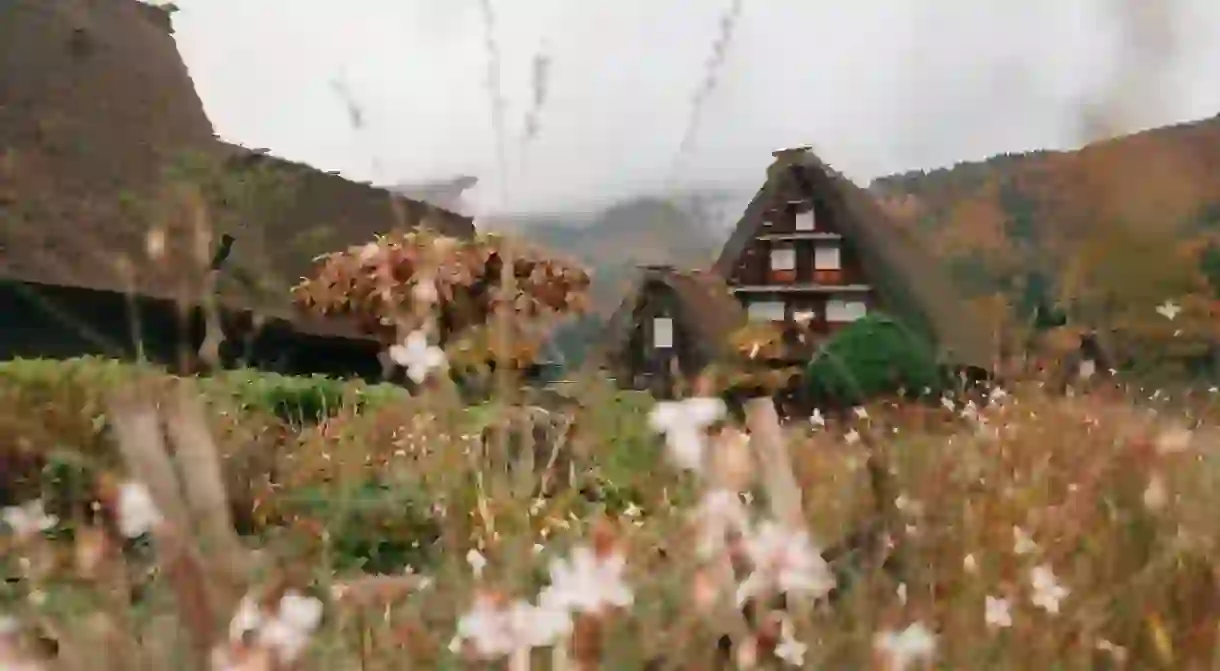Hands in Prayer: The Gasshou Zukuri of the Edo Era

Deep in the mountains of Gifu Prefecture, three hours east of Tokyo, sits a town populated by gasshou zukuri, Japan’s uniquely designed grass roofed farmhouses. Here’s everything you need to know.
In English, the term gasshou literally translates to ‘praying hands’, named because of their sharp steep roofs clasped together resembling two hands in prayer. One of the best places to see them is in the UNESCO World Heritage-listed town of Shirakawa.




Gasshou zukuri
The gasshou are a type of minka (in English: ‘houses of the people’), a general term used during the Edo era (1603-1868) to refer to any house belonging to the non-samurai classes.
Gasshou were typically farmhouses and some had an additional loft for sleeping, but for the most part, living quarters were located on the lowest floor, bungalow style. This was all the more impressive considering it was common for large extended families to live together in one unit. In some cases, as many as 30 people lived together.


Silkworm farms
It was thought that the steep roofs provided effective protection against snowy weather, but it turns out there’s another reason for it. The spacious area under the roof was perfect for raising silkworms and multiple slatted lofts were installed just for this purpose.
These wriggly housemates were of incredible value to the people of Japan, especially before World War II, when silk exports were a considerable source of foreign currency for the country. In the 1920s and 30s, before the invention of nylon, Japan supplied a large portion of the silk that was used to make stockings.
These rustic gasshou houses are still the main tourism magnet in the humble Shirakawa-go region. Around 96% of the land in Shirakawa-go is forest. The area is most famous for its heavy snowfall, which covers the area (on average) in around two to three meters of snow. The steep incline of the gasshou roof was a very conscious design. It’s incredibly steep, created so the heavy snow that covers the area from around December through to March would slide off to the side.




Gifu’s famous soba
To accommodate the recent tourism boom, a number of houses here have been given a second life as local restaurants. If there’s one dish you can’t visit without trying, it’s the local soba and the area’s excellent water quality is a vital component of the town’s great soba.
When the water freezes, it is far less susceptible to impurities. The freezing cold, spring mountain water that runs through the Northern Gifu region makes it the perfect place for soba noodles. Two of the most popular toppings to try with your locally produced soba are sansai (wild mountain vegetables) and hida beef from nearby Takayama.



How to get to Shirakawa-go from Tokyo
Shirakawa-go is a small traditional region in Gifu Prefecture in the middle of Japan’s main island of Honshu and is home to some of the best-known examples of the country’s unique gasshou architecture.
From Tokyo, the best way to get there is to take the Hokuriku-Shinkansen Kagayaki heading to Kanazawa from Omiya Station. Hop off at Toyama Station and switch to the transport network. During the day, regular buses for Shirakawa-go leave from Toyama Station’s Toyama Ekimae Bus Stop.



Ogimachi Village
Museum, Park
Ogimachi is the biggest village in Shirakawa-go and is a popular day trip destination for those visiting the city of Kanazawa. Getting a return bus from Kanazawa is easily accessible and a great way to enjoy the scenery, but to really immerse yourself in the culture and history of Shirakawa-go, stay a night or two at one of the farmhouses. In Ogimachi, many of the farmhouses were relocated across the river to become an open-air museum. They were moved to prevent any destruction from the general activities of the city. Known as the Gassho-zukuri Minkaen, the museum is open from 8:40am to 5:00pm (9:00am to 4:00pm December to February) but is closed Thursdays from December to March. Admission to wander around the houses is 600 yen (£4). The central transport hub of the area, Ogimachi is the best place to start your journey through the Shirakawa-go region. From here, some bus lines will connect you to the nearby cities of Takayama, Nagoya, Kanazawa, Toyama and Takaoka. Once you arrive in the village, it’s easy to explore the towns by foot.















